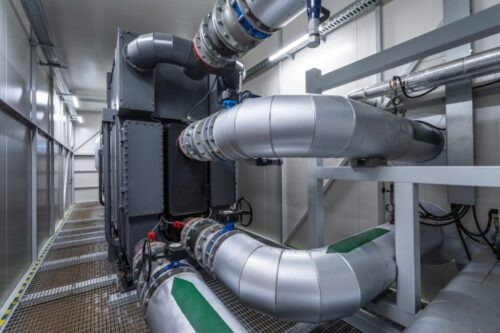Community Heat Hubs

Power On’s award-winning Community Heat Hub solution is the ultimate low-carbon, regulation-compliant, future-proof solution for heating high-rise developments.
As we transition away from gas, our Community Heat Hub provides a straightforward and sustainable approach to delivering reliable heating and hot water, while delivering substantial cost savings for both developers and residents.
Did you know?
Our Group’s Community Heat Hub solution won ‘Innovation of the Year’ at the 2024 Showhome Awards.
Planning a development? Let’s talk about how a Community Heat Hub can be designed and delivered for your scheme.
See the Community Heat Hub in Action
Watch our short video to see how our Community Heat Hub delivers reliable, low-carbon heating and hot water for modern developments — reducing build costs, simplifying installation, and supporting the journey to net zero.
Want to learn more? Use the links below to explore our resources.
Download our flyer for a quick overview of the key benefits for developers, residents and planners.
Download our brochure for an in-depth guide to the full CHH solution and how we future-proof communities for zero-carbon living.
How does the Community Heat Hub work?
The Community Heat Hub produces heat using large-scale, high-efficiency heat pumps, powered by low carbon electricity.
These can be air-source or water-source, depending on what best suits the site and local environment.
Heat is pumped to each apartment in the form of hot water through our highly insulated underground flow-and-return pipe network.
In each apartment, a Heat Interface Unit (HIU) with integrated smart meter, then transfers heat from the network to the apartment’s individual heating system and hot water supply.
Our solution meets the Future Homes Standard (FHS), minimises grid demand and will achieve net-zero emissions without further work.
Did you know?
Until recently, heat networks operated with water temperatures of around 85-90 °C, but new building regulations and industry guidelines now allow us to operate at lower temperatures. Our innovative new design uses highly insulated plastic pipes to carry water at 60°C, making this kind of heat network a very cost-effective way to heat high density sites.
Did you know?
We’re working with electricity operators and the regulator, Ofgem, to explore ways we can further improve our smart Heat Network design: for example, by adding
additional thermal stores and battery storage to the heat hub to further reduce requirements on the grid at peak times.
What are the key benefits of the Community Heat Hub?
Simple installation
For developers, it’s a straightforward swap from gas. The gas pipe is replaced with our heat pipe, and the boiler with our heat interface unit and there’s no need for a hot water cylinder.
Reliability
The system uses modern technologies to provide clean, safe, reliable heat. Built-in back-up electric boilers and thermal storage ensure continuous supply 24/7, even during extreme weather or peak demand.
Cost & Space Saving
Our solution is cost-effective with around £1,000 lower cost per plot than fitted individual Air Source Heat Pumps. No external kit or hot water cylinder saves space. Plus, using public open space for the Community Heat Hub, with fewer domestic substations avoids loss of valuable development land.
Smarter Energy Use
The system heats water when electricity is cheaper and demand is lower. The thermal tank stores a minimum of two hours of hot water, which is then used during peak periods. This reduces reliance on the grid and cuts peak demand by up to 45%.
Highly Sustainable
By removing the need for individual gas boilers and providing locally, sustainably sourced heating and hot water, our solution delivers 75-80% carbon savings from day one, supporting compliance with the Future Homes Standard.
Zero-Carbon-Readiness
Residents will be able to transition to zero-carbon heating and hot water without any further work in their homes and developers have peace of mind that the solution is future-proof.


